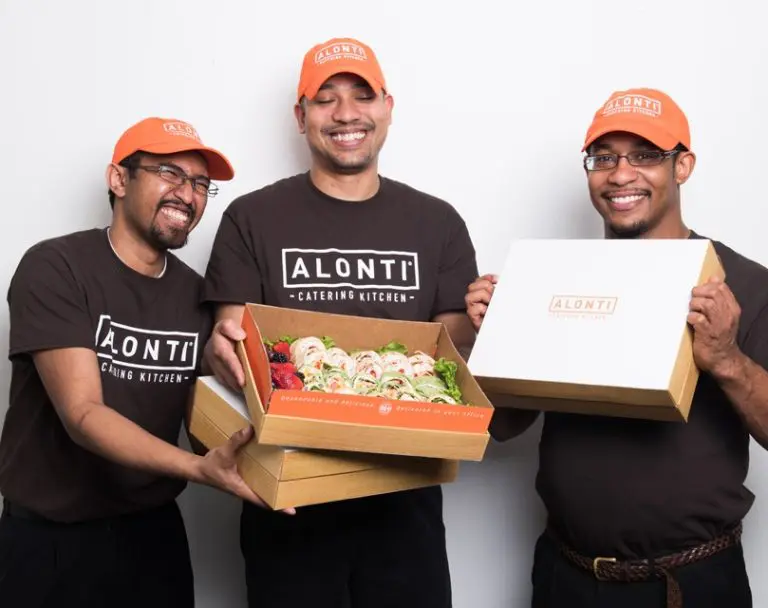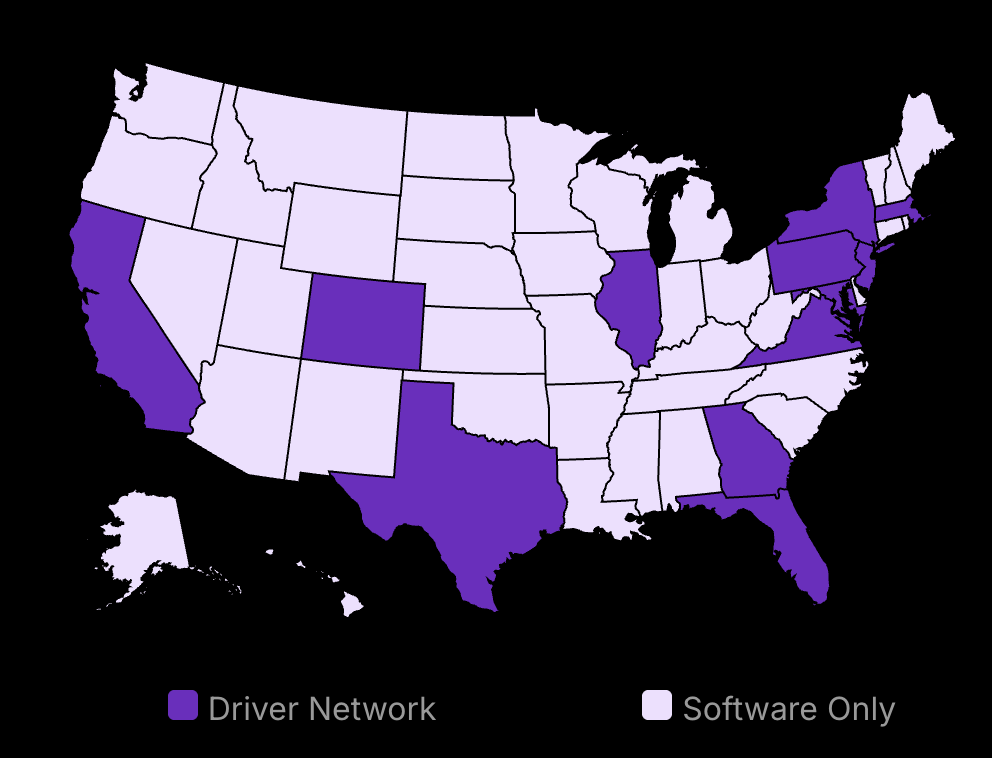Data suggest that restaurant owners struggle with multi-unit ownership and expansion in their first year of growth. Numbers from the past year reveal a hard truth: managing all your locations is complex, demanding, and filled with potential missteps, especially when it requires careful planning to sustain long-term success.
Let’s examine a real scenario: Sarah Chen owned a thriving Asian fusion grill in Seattle. Her success led her to open three more locations in 18 months. Within a year, two locations were losing money. The problem wasn’t her food—it was her systems and inability to share resources efficiently.
Today, Sarah runs 15 profitable entities across the Pacific Northwest. What changed? She learned that growth isn’t about replicating success—it’s about creating scalable systems and treating expansion as a form of careful, strategic development.
The restaurant industry in 2025 faces unique challenges. Rising labor costs, evolving client expectations, and innovative technologies are reshaping how successful multi-unit restaurants operate. The lessons from the past year show that the old playbook no longer applies to modern businesses.
This guide shows you exactly how to:
Build systems that support sustainable growth
Use data to make smarter expansion decisions
Form strong teams across multiple locations
Stay profitable while scaling operations
For restaurant owners ready to expand beyond one location, this is your practical roadmap. We’ll explore real examples from owners who’ve succeeded (and failed) at multi-unit ownership, combined with fresh insights from 2025’s most successful restaurant businesses. In addition, understanding and managing your food cost percentage is crucial for maximizing profits. By optimizing this key metric, restaurant operators can significantly enhance their bottom line while sustaining quality and customer satisfaction.
Most importantly, you’ll learn how to avoid the common pitfalls that prevent multi-unit restaurants from thriving. By treating each location as a critical part of your brand and building scalable systems, you can ensure sustainable growth year after year. If you’re considering expanding your business and are curious about the logistics of managing multiple locations, exploring a second restaurant location can provide valuable insights.

Save 80% of delivery management time
We handle everything:
- Dedicated operations manager
- Real-time tracking dashboard
- Automated customer notifications
- Urgent issue resolution
Proven Franchise Expansion Techniques
Understand the latest franchise expansion techniques for 2025.
Weigh the benefits and risks of franchising.
Learn key steps for executing a franchise strategy.
Overview of Techniques Trending in 2025
Franchising remains a popular growth strategy in the restaurant industry. In 2025, several innovative techniques have emerged. Multi-channel franchising is trending, where businesses integrate online and offline efforts to expand reach. Restaurants use data analytics to tailor offerings to local tastes. This ensures each franchise meets specific community needs while also following brand standards.
Another technique is flexible franchising models. These allow for varied investment levels and operational partnerships, attracting diverse franchisees. Additionally, eco-conscious franchising is gaining attention. Many franchises now include sustainable practices in their operating guidelines. Adopting these practices can differentiate a franchise in competitive markets.
Technology also plays a crucial role. From virtual reality training for franchisees to AI-driven customer insights, tech integration is crucial. Knowing the right blend of these techniques can make or break expansion efforts.
Benefits and Risks of Expanding through Franchising
Franchising offers several benefits. It allows rapid expansion with lower capital costs. Franchisees invest their capital, reducing financial risk for the parent company. This strategy also brings local expertise, as franchisees often have strong connections and an understanding of the target market. Franchisees handle operations under a proven system, which increases the likelihood of success.
However, franchising has its downsides. Loss of control can become a problem if franchisees do not adhere to brand standards. The brand’s reputation might suffer due to inconsistent quality across franchises. Another risk is legal challenges, which can arise from poorly drafted franchise agreements or disputes with franchisees.
Balancing these aspects requires a robust support system and well-defined agreements. Successful franchises manage risks through thorough vetting and ongoing training programs.
Key Steps to Implement a Successful Franchise Strategy
Implementing a franchise strategy demands a structured approach. Start with researching the franchise model that aligns with your restaurant’s goals. Next, develop a detailed operational framework. This includes training manuals, marketing plans, and customer service protocols. Such components offer consistency and clarity.
An initial pilot program is essential. Test the model in select locations to refine processes and gather feedback. This phase helps spot potential issues that can be handled before nationwide or global expansion. Prominently feature local markets in this pilot to evaluate adaptability.
Intellectual property protection is critical. Ensure trademarks, recipes, and business models are secured legally. This maintains brand integrity and prevents unauthorized duplication. Lastly, establish robust support systems for ongoing franchisee assistance. Providing continuous support and updates ensures alignment with the evolving market.
Researching Market Demand
Understanding market demand is foundational. It’s the first phase in deciding where and how a franchise should expand.
Analyze Target Locations for Potential
Consider regional variances in demographics and customer preferences. Choose locations with long-term growth potential. Areas with stable employment rates, growing populations, and high-traffic locations typically offer higher success rates for franchises.
Consider zoning laws and local regulations. Restaurants sometimes face legal hurdles in specific zones. Investigate these factors to avoid legal setbacks. Moreover, examines the competitive landscape. Are there successful franchises already thriving in the area? This could indicate robust demand but could also mean stiff competition.
Conducting Demographic Studies
Demographics significantly influence restaurant success. Identify target customers’ age, income, education, and lifestyle. These factors guide menu design, pricing, and marketing efforts.
Assess local cultural and social nuances that might affect the brand. Tailoring the concept to fit local cultures while maintaining core brand values is crucial. Employ data analytics tools to deepen demographic insights.
Using accurate data helps avoid misguided decisions that waste resources. For example, a high-end restaurant may struggle in areas with lower average incomes, whereas family-friendly eateries may thrive.
Competitor Analysis
Competitor analysis is invaluable. It reveals market position, innovation trends, and pricing strategies. This knowledge helps in differentiating the brand and identifying gaps in the market.
Analyze the strengths and weaknesses of existing operators. Consider their customer base, marketing strategies, and service quality. Understanding these can highlight opportunities for improvement.
For instance, if competitors lack certain offerings, like vegan options, this might be a niche to fill. Continuous monitoring of competitors keeps the franchise adaptable to market shifts.
Building Strong Franchise Relationships
Strong relationships between franchisors and franchisees are vital for long-term success.
Guidelines for Maintaining Communication
Effective communication channels strengthen relationships. Regular communication fosters trust and clarity of expectations. Digital tools like Slack or Microsoft Teams facilitate quick and seamless communication. Monthly newsletters can update franchisees on brand innovations, policy changes, and new product launches.
Moreover, annual conferences serve as forums for discussing challenges and celebrating milestones. They bring the franchise community together and instill a sense of belonging.
Regular Franchisee Feedback and Support
Encouraging franchisee feedback can lead to improvements in operations and relationships. Scheduled feedback sessions and surveys gather information on challenges, expectations, and successes. Implementing changes based on feedback shows franchisees their voices matter, which boosts morale and commitment.
Support drives success. Providing training, marketing resources, and operational assistance keeps franchisees aligned with brand goals. This support not only helps individual franchises succeed but also enhances overall brand strength.
Importance of Sharing Successful Practices
Successful franchises are transparent. Sharing best practices within the network fosters a culture of learning and improvement. Regularly highlighting successful franchises through newsletters or portals encourages others to emulate these practices.
Franchisors should provide platforms where franchisees exchange ideas. Virtual town halls or forums let franchisees share experiences and solutions to common challenges. This approach creates a cohesive and proactive network.
Mutual benefit is achieved when all parts of the franchise contribute to and benefit from collective wisdom.
Enhancing Operational Efficiency in Multi-Unit Restaurant Business with Multiple Locations
Boosting performance in multi-unit setups means understanding where to improve.
Streamlining brings better control and profit.
Tech advancements are key to efficiency.
Understanding Areas for Efficiency Improvement
Multi-unit restaurants face unique challenges. Managing multiple locations means staffing, supply chain, and customer service must be like clockwork. Pinpointing inefficiencies is the first step. One common issue is inconsistent staff performance. It can vary based on location, resulting in fluctuating customer satisfaction. Inventory management is another pain point. Overstocking or stockouts affect costs and customer loyalty.
Taking steps to identify these areas involves using data. Reports and analytics help managers see which locations underperform. Regular audits can also highlight inefficiencies. Books like “The Lean Six Sigma Pocket Toolbook” offer insights into refining processes by reducing waste and improving quality. It’s a practical starting point for those seeking to boost efficiency.
For a deeper dive, consider resources from operational efficiency experts. Industry webinars and professional courses often provide case studies and tailored solutions. They help identify common issues faced by multi-unit operations. Having access to specialized content will aid in finding the right fixes tailored to restaurant needs.
Methods to Streamline Operations Across Locations
Successful restaurants implement shared systems across locations. One method is centralizing supply ordering. This cuts costs through bulk purchasing and ensures all locations receive consistent quality. Communication is the backbone of multi-unit operations. A unified communication platform helps ensure all staff, regardless of location, are on the same page.
Restaurants can also benefit from cross-training staff. This provides flexibility between roles, leading to reduced downtime and cost savings when absences occur. Cross-training is more effective when staff understand how each role contributes to the overall operation. “The Restaurant Manager’s Handbook” offers insights into structured training programs, essential for cross-training success.
The concept of lean management can also be applied. It focuses on reducing waste and optimizing processes. Engaging with lean management communities online can offer real-world examples and tools that further efficiency goals. These forums regularly discuss tools like value stream mapping and kaizen, which bring long-term operational improvements.
Tools and Technologies Boosting Efficiency
One key tool in improving efficiencies is the Point of Sale (POS) system. Modern POS systems streamline order processing, reduce wait times, and track sales data. Options like Square and Toast offer cloud-based solutions that allow for easy integration across multiple locations. They provide valuable insights into purchasing patterns, necessary for optimizing inventory and staffing.
Technology Implementation: Research indicates that 77% of restaurants that have adopted new technology report increased efficiency. This includes benefits such as reduced pressure on staff (61%) and decreased operational costs (35%).
Inventory management software helps track stock levels. This reduces over-ordering and wastage. Solutions such as BlueCart and MarketMan integrate with POS systems, offering real-time insights into inventory levels. With advanced forecasting features, these tools can predict stock needs based on past sales and current trends.
Employee scheduling tools like 7shifts make managing multi-location staff simpler. They allow managers to create schedules that adapt to demand fluctuations. Features like time-tracking and reporting provide real-time labor costs and payroll data. By staying informed, managers can make proactive decisions, ensuring shifts are adequately covered without overspending.
Establishing Standard Procedures
Standard Operating Procedures (SOPs) lay the groundwork for organizational consistency. They ensure each location delivers the same quality of service and product. Starbucks is famous for its SOPs, and following such models can boost employee performance by providing clear guidelines.
Crafting these procedures requires input from managers and staff. Consider pilot testing SOPs at one location before a full rollout. This allows for adjustments based on practical feedback. Regular SOP updates keep pace with industry trends and internal changes. “Service Management: Operations, Strategy, and Information Technology” is a useful reference for crafting SOPs that align with strategic goals.
Training is key to SOP implementation. Thorough staff training ensures everyone understands and follows the guidelines. Training should not be a one-time event but an ongoing process. Regular refreshers and updates adapt SOPs to evolving practices and technologies.
Monitoring and Updating SOPs as Needed
Once SOPs are established, they need to be monitored across locations. Use performance metrics to assess adherence. Metrics like customer feedback and productivity indicators give insights into where tweaks are needed. It’s a dynamic process, ensuring procedures keep improving.
Regular reviews of SOPs keep them relevant. This is crucial as technologies change and customer expectations evolve. Involving staff in the review process can bring practical insights to light. Surveys and feedback sessions are valuable tools in this regard. They encourage employee buy-in and foster an environment of continuous improvement.
Industry-specific workshops can be great for understanding evolving SOP practices. These gatherings offer networking opportunities with peers and experts, sharing innovations and challenges. Participating in these events keeps managers in the loop on best practices and new methodologies for SOP optimization.
2024 Market Trends: Adapting to Market Trends in F&B
Sustainability and data analytics are key.
Focus on eco-practices and making sense of data.
Stay ahead of competitors by using these insights.
Overview of Recent Changes in Customer Preferences
2024 has been a year of significant changes in customer preferences in the Food & Beverage industry. Consumers are focused on value. With 1 in 2 customers being cautious about spending, offering good value can drive more foot traffic. Sustainability is also in high demand. More people want eco-friendly options, making it crucial for businesses to adapt by introducing sustainable practices and transparent sourcing.
Consumer Demand for Sustainability: Over 60% of consumers actively seek out restaurants that use sustainable packaging, indicating a strong preference for eco-friendly practices in dining choices.
You should also note the rising demand for wellness. Customers have shown an interest in healthier menu options. Offering items that cater to this trend can differentiate your restaurant. This shift towards transparency and wholesome options implies that businesses need to align their menu offerings to cater to these preferences.
Demand Shift: 86% of consumers want brands to provide more sustainable products.
Finally, practical tech adoption is necessary. Technology has become more integrated into consumer interactions. Ordering via mobile apps and systems for lesser wait times are expected features. Adjusting to these tech-driven changes is an opportunity to meet expectations and improve customer experience.
Adapting Menu and Services Based on Trends
Adjusting your menu to meet these evolving trends is pivotal. Begin by auditing your current offerings. Identify items that align with health and sustainability. Consider replacing or updating parts that don’t meet these demands. Develop new menu items that highlight local, organic, or eco-friendly ingredients.
Next, introduce seasonal rotations. Seasonal menus keep offerings fresh and allow you to support local farms. It also gives customers new reasons to visit. Additionally, consider offering plant-based options. While not all customers prefer them, inclusivity on the menu can boost appeal across demographics.
Lastly, adjust your service approach. Implement online ordering and delivery if not already done. With e-commerce driving a significant portion of growth, having a robust online presence is essential. Also, ensure staff are trained to communicate the sustainable practices and health aspects of menu items. Knowledgeable staff can engage customers more effectively, leading to repeat visits.
Willingness to Pay More: A study revealed that consumers are willing to pay an average premium of 20% for sustainable meals, with many willing to pay over 10% more at eco-friendly restaurants.
Strategies for Staying Ahead of Competition
Remaining competitive requires businesses to stay agile. Begin with a focus on technology integration. As per recent trends, employing technology not just in customer-facing roles but also in back-end operations is critical. Use tech solutions to streamline inventory, manage staffing, and optimize kitchen operations. This can lead to cost savings and better service quality.
Focus on value. Given the economic environment, offering promotions and loyalty programs can retain customers, especially those who are spending cautiously. Develop a clear and attractive value proposition that shows how you meet the needs of today’s consumers.
Moreover, forge partnerships with local suppliers. Highlight these partnerships in marketing materials. It can create a narrative appealing to sustainability-minded customers. And lastly, keep competitors close. Regular competitor analysis keeps you aware of what others are doing and helps spot gaps you could fill.
Emphasizing Sustainability
Introduction of Eco-friendly Practices
2024 has seen a marked increase in restaurants adopting eco-friendly practices. Reducing waste is a good starting point. Implement recycling programs and reduce single-use plastics. Some places are even going zero-waste, working directly with farms or sustainable suppliers. Evaluate your supply chain to identify the most impactful changes.
Menu Changes to Include Sustainable Options
Revise your menu to feature more sustainable food. Sourcing locally reduces transportation emissions and supports community farmers. Include more plant-based options, as their popularity continues to rise. Highlight these changes on your menu to make them visible to customers who value sustainability.
Marketing Sustainability Efforts Effectively
Once changes are in place, communicate them to your audience. Use social media and in-store signage to show what you’ve done. Transparency builds trust. Showcase the origins of your ingredients and the benefits of your eco-friendly practices. This can build a committed customer base and draw new patrons who prioritize sustainability in their choices.
Leveraging Data Analytics
Gathering Customer Insights from Data
Data analytics is a powerful tool for understanding customer preferences. From point-of-sale systems to online order tracking, gather information that shows what your customers like. Understand trends in what sells well and when. This depth of insight allows you to tailor your offerings more precisely.
Using Data to Predict Market Trends
Use analytics to forecast future market shifts. By identifying patterns in your data, anticipate what consumers will want next. This proactive approach keeps you ahead and allows for smoother transitions in your offerings, rather than playing catch-up.
Adjusting Business Strategy Based on Analytics
With a firm grasp of your data, adjust your strategies with confidence. Whether it’s marketing, inventory management, or staffing decisions, data can offer evidence-based guidance. Implement changes in test phases to gauge performance before a full roll-out. This responsiveness not only optimizes operations but also positions your restaurant as a leader in effectively integrating tech innovations into traditional practices.
Data-Driven Advantage: Data-driven businesses are 23 times more likely to gain new customers and six times more likely to retain existing customers compared to those that do not leverage data effectively.
By focusing on sustainability and leveraging data, there is ample opportunity to stand out in the crowded F&B space. For 2025, embracing these trends early will position businesses well for continuous growth and competitiveness.
Developing Strong Leadership in Multi-Outlet Management
Leadership in managing multiple units is key for success.
Communication, learning, and clear roles are essential.
Learn how to build effective leadership in large-scale operations.
Importance of Leadership in Managing Multiple Units
Leadership is vital in multi-unit management. Successful leaders inspire and guide their teams. They ensure consistent operations across locations. In multi-unit settings, the challenges are amplified. These leaders handle not just the usual restaurant issues but also the communication and alignment across units.
The responsibilities of a multi-unit restaurant manager are extensive. They develop strategies to keep each unit aligned with the brand’s vision and standards. They face higher demands, needing adeptness in coordination and problem-solving. To get deeper into understanding leadership roles, check classics like “The Art of Leadership” by Max DePree. It outlines leadership principles that remain timeless.
Leadership in this context is about balancing a larger workforce with individual unit needs. It’s crucial to maintain a bird’s-eye view of operations while also getting involved at ground level when needed. This dual focus keeps operations seamless and tuned with the organizational goals.
Roles and Responsibilities in Multi-Unit Management
A multi-unit manager’s role is multifaceted. They’re not only the face of the restaurant group but also the chief problem-solver and strategist. They oversee the unit managers and ensure they align with company goals.
Three main responsibilities of a restaurant manager include managing daily operations, ensuring quality control, and handling financial aspects. These duties scale up with additional units. For instance, inventory management becomes more complex with each unit, requiring an efficient system in place.
Salary expectations for this role vary. This reflects the increased responsibility and skills required for the position.
Average Salary: According to Zippia, the average salary for a multi-unit manager in the United States is $64,703, with salaries typically ranging from $48,000 to $87,000 annually.
Building a Leadership Style That Suits Large-Scale Operations
Leadership style in multi-outlet management needs to be adaptive. Leaders must foster a culture of inclusivity and engagement. You manage things; you lead people. This quote emphasizes the human-centric approach essential in large-scale operations.
Adopting a transformational leadership style can be beneficial. This approach focuses on inspiring and motivating employees. Leaders who embrace this style encourage innovation and nurture talent. This makes a difference in performance across restaurants.
Leadership's Role in Engagement: Research indicates that 70% of team engagement is determined by the manager or team leader.
Books like “Leaders Eat Last” by Simon Sinek can provide in-depth insights into fostering leadership that inspires. Sinek’s work is a valuable resource for those looking to build a resilient and motivated work culture.
Effective Communication Strategies
Encouraging Open Dialogue Across Teams
Open dialogue is the backbone of effective communication in multi-unit management. Encouraging honesty and transparency fosters trust and unity. Teams become more aligned with open channels of communication. Effective managers create a safe space for feedback and discussion, which leads to more engaged employees.
Hosting regular meetings, both formal and informal, can aid in reinforcing this dialogue. This allows for updates, brainstorming, and planning. Leaders should consider using digital tools like Slack or Microsoft Teams for real-time communication.
Hosting Regular Meetings for Update Sharing
Regular meetings help keep everyone informed and aligned. Weekly check-ins and monthly strategy sessions keep teams focused. These meetings are more than just information sharing. They are opportunities for cross-unit learning and synergy.
Managers might also opt for bi-weekly touchpoints for units facing unique challenges. This allows for in-depth problem-solving sessions. “The Advantage” by Patrick Lencioni, offers profound insights on how to hold productive meetings. It’s a comprehensive guide on enhancing team performance through strategic dialogue.
Supporting Continuous Learning
Offer Training Programs and Workshops
Continuous learning keeps teams ahead. Offering regular training sessions and workshops fosters skill development. It’s essential not only for personal growth but also for addressing gaps in operations. A well-trained team is an empowered one.
These programs should cater to various levels, from entry-level to advanced courses. Managers should also encourage participation in industry conferences and seminars to broaden perspectives.
Facilitate Career Growth for Staff
Career growth opportunities retain talent. They encourage loyalty and motivation. Managers must establish clear career paths within their organization. This includes regular reviews and setting achievable milestones for professional development.
“First, Break All the Rules” by Marcus Buckingham and Curt Coffman provides insights into building environments that nurture talent. Implementing strategies from these books helps in retaining valuable team members.
Staffing Shortage: As of 2025, 79% of operators reported being short at least one position, highlighting ongoing staffing challenges.
Encourage Feedback Loops for Improvement
Feedback loops are essential for growth and improvement. Encourage regular feedback from staff on training programs and day-to-day operations. This helps managers identify areas needing attention and fosters a culture of continuous improvement.
A structured feedback system ensures concerns are addressed timely and improvements are ongoing. Effective feedback loops serve as the building blocks for a more adaptive and responsive organization.
Predictions for Multi-Unit Growth in 2025
Real growth of the restaurant industry set at 0.8%
The rise of omnichannel and personalized experiences
Expanding talent pool and enhancing employee engagement
1. Increased Focus on Omnichannel Presence
In 2025, restaurants must focus on a seamless omnichannel presence. Strengthening both online and offline platforms is vital. This approach can reach more customers and offers convenience. Digital order and delivery systems are a must-have.
Restaurants are also using tech to enhance the online customer experience. This can involve interactive tools that simplify online orders and provide customized experiences. For instance, tech-savvy chains like Domino’s have led the way with apps and online tracking. Other chains should follow, making restaurant visits smooth from online orders to table service.
2. Emphasis on Personalized Customer Experiences
Personalization in dining experiences is becoming more important. Many restaurants are using effective loyalty programs. Programs like Starbucks Rewards show significant returns, driving repeat visits.
Marketing that focuses on specific customer segments is essential. Understanding customer preferences allows restaurants to craft messages that resonate more deeply with their audience.
Collecting and using customer feedback has never been more important. For example, McDonald’s uses customer feedback to adjust menus globally. Implementing adjustments based on feedback can make a brand more relatable and responsive.
3. Expanding Talent Pool and Employee Engagement
To thrive, restaurants need to build a diverse talent pool. They should focus on creating new talent pipelines. With labor shortages, this is crucial. Companies are creating relationships with culinary schools or training programs to identify potential hires early.
Employee retention programs are key to success. The high turnover rate in the restaurant industry can destabilize operations. Restaurants can aim to cultivate a positive work environment to keep employees motivated. Panera Bread’s focus on leadership training and advancement has shown how impactful this can be.
High Turnover Plague: Turnover rates in the restaurant industry are near 80%, contributing to high hiring costs and a need for improved training and retention strategies.
Work-life balance promotes team well-being and reduces burnout. Flexible scheduling and mental health support can be useful strategies to adopt. This approach is not just about employee happiness but also enhances productivity and service quality.
Engagement and Productivity: Companies with high employee engagement see a 23% increase in profitability, and engaged teams report 18% higher productivity in sales.
Conclusion
The restaurant industry in 2025 shows clear patterns: successful multi-unit growth needs both data-driven decisions and human-centered management. Companies that combine these elements see higher success rates in expansion, whether managing several units or exploring new franchise opportunities.
The key is in the details: strong franchise relationships, efficient operations, and leadership development create a foundation for growth. Technology, such as advanced software systems, provides actionable insights and benefits for managing operations, but it’s the human element—from staff training to enhancing customer experiences—that makes the difference in overall business performance.
Looking forward, three factors will shape multi-unit restaurant success:
Smart use of data analytics for decision-making
Investment in staff development and retention
Balance between standardization and local market adaptation
For restaurant owners planning expansion, whether as multi-unit operators or franchise owners, start with one area of improvement. Focus on strengthening operational systems, enhancing leadership skills, or creating better marketing strategies. Careful planning and small, focused improvements, such as refining customer service or leveraging new tools, can compound over time, helping you expand your entire group sustainably.
Most importantly, remember that sustainable growth in multi-unit restaurants comes from building strong foundations first. Each new location, whether part of a franchise business or independently owned, should strengthen your brand, not stretch it thin. Take measured steps, learn from each expansion, and maintain your focus on long-term success rather than rapid growth.



























